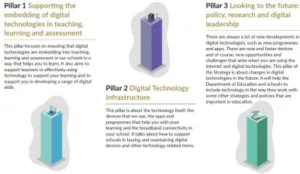Do you wonder what’s trending these days in the education arena? Today’s instalment continues our four-part effort in spotlighting post-pandemic trends now shaping the K12 and university market. Prior to the onset of the pandemic, technology planning had largely grown out of vogue. Most schools or university departments stopped doing it, and what planning was done, continued well out of sight in cloistered IT shops.

One reason for the pre-pandemic decline in technology planning was that bureaucrats in many schools, districts, and university sites just made it too painful to do. Lost to many educational institutions were the manifold benefits of forward and strategic thinking, as planning efforts settled into the less disruptive role of simply executing the next-up initiative or rollout.
Post-pandemic, however, technology planning is back, and in a big way. That’s a good thing, because costly technology mistakes in education circles seem to be largely predicated on their inability to “plan before do.” The pandemic abruptly and compellingly forced the hand of many educational institutions to reintegrate their vision for learning with the changing demands of technologically driven change. An example of resurgent interest in K-12 school tech planning is exemplified by the Ireland Department of Education’s recent Digital Strategy for Schools to 2027. This plan is based on three pillars:
- embedding technology in teaching and learning
- making school infrastructure and connectivity more robust to meet the demands of the digital age
- tracking notable changes in the digital environment, thus informing research, policy, and leadership decisions
The new Irish plan will be carried out over two successive phases (2022-24 and 2025-27) for implementation, with a reflection year in between to study new developments and enable any necessary pivots. You can view the entire document here.
An example of reviving interest in higher-ed tech planning is exemplified by the recent strategic plan rewrite from my own university (the University of Colorado-Denver) entitled “One Size Fits One: An Equity Serving Digital Education Strategy”. This post-Rona strategic technology plan aims at an improved blending of on-ground and online students, clearly influenced by the chaotic pandemic. You can view the entire document here. The UC-D plan features four key priorities for a technology-rich future:
- shoring up the foundations that allow for digital education and innovation (classroom tech, access, training, and policies for procurement and usage of classroom tech)
- developing a hybrid classroom model for more personalized and equitable support of teaching and learning
- pursuing a portfolio approach to higher learning that serves students for life (not just once and done)
- offering ultimate flexibility through stackable degrees, credentialing and certificates
What all these tech planning schemes mean for the display manufacturer, integrator, or salesperson can be explained simply: before you submit your next tender, ask your customer for their strategic technology plan. Strive to fit your products to the general direction and goals of their plan and not run at crosscurrents with their stated priorities. You’ll have a higher possibility for a positive pay off. –Len Scrogan.


